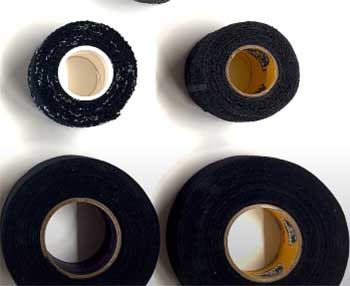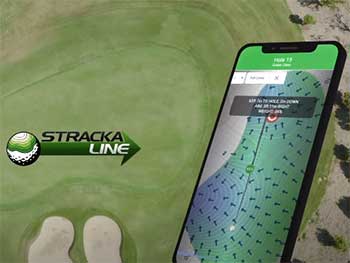I see them everywhere—at the airport, on my doctor, on runners by the river. The rise of On Cloud shoes is not just a trend; it feels like a footwear takeover.
As a longtime loyalist to other brands, their sheer ubiquity became impossible to ignore, forcing me to ask from an analytical perspective: why this specific shoe?
What is the secret behind their phenomenal popularity? It’s a combination of tangible technology, brilliant marketing, and a deep understanding of the modern consumer.
Reasons For On Cloud Shoes Being So Popular
The answer isn’t a single silver bullet. It’s a masterfully executed combination of factors that, together, create a compelling product and brand.
- The Unmistakable Silhouette
- The Secret Sauce: Understanding CloudTec
- The Masterclass in Marketing
- Riding the Athleisure Wave
- The Psychology of a Premium Price Tag
Let’s talk about these reasons…
It Starts With The Look: The Unmistakable Silhouette
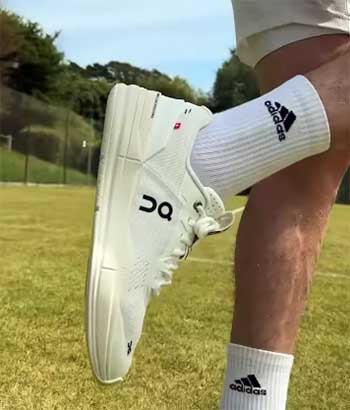
Before you ever feel an On shoe, you see it. And you don’t mistake it for anything else.
The most striking feature, the one that serves as the brand’s visual signature, is the outsole.
It’s not a solid block of foam like a Hoka or a sleek wedge like a traditional Nike runner.
It’s an series of open-tube-like pods, which the company calls “Clouds.”
This design choice is, frankly, genius.
It’s visually arresting and immediately telegraphs “technology” and “difference.” It looks engineered, not just styled.
When you see that sole, you know exactly what brand it is without ever seeing the minimalist “On” logo on the side.
In a marketplace saturated with swooshes, stripes, and letters, creating a unique and instantly identifiable silhouette from 20 feet away is a monumental achievement. It’s the shoe’s fingerprint.
Beyond the sole, the overall aesthetic is one of Swiss precision and minimalism. The colorways are often clean, sophisticated, and muted—think alpine grey, midnight blue, clean white, and all-black. They avoid the garish neons that can scream “gym only.”
This understated elegance means the shoes don’t clash with everyday clothes. They look just as at home with a pair of technical trousers or dark-wash jeans as they do with running shorts. This was a deliberate choice. It’s a shoe designed to transition seamlessly across the different parts of your day, a concept I’ll touch on again later.
The materials feel premium, the lines are clean, and the construction is meticulous. It doesn’t look like a loud, aggressive piece of athletic equipment; it looks like a sophisticated piece of personal technology.
The Secret Sauce: Understanding CloudTec
If the look is the hook, the feeling is the reason people stay. This is where the company’s core innovation, CloudTec®, comes into play. I was initially skeptical. “Running on clouds” sounds like pure marketing fluff.
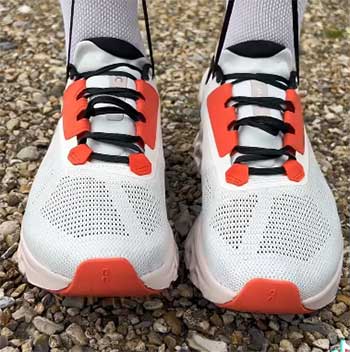
But the sensation of wearing them is genuinely unique, and it stems directly from the design of those pods on the outsole.
Here’s my attempt at explaining it without the corporate jargon.
Traditional running shoes have focused on cushioning by using a single slab of foam (like EVA or TPU).
This foam compresses vertically when you land, absorbing impact. It works, but it can sometimes feel mushy or energy-sapping.
On’s CloudTec® works differently.
When your foot strikes the ground, the hollow pods do two things simultaneously. They compress vertically, just like traditional foam, to absorb the initial shock. This is the soft, cushioned landing—the “cloud” part of the experience.
But because they are individual pods, they also compress horizontally, spreading the impact outward. This dual-plane compression is what creates that distinct, gentle landing.
But here’s the clever part. Once the pods are fully compressed, they become a solid, firm platform. The rubber interlocks, creating a stable base for you to push off from. This is what On calls the “firm takeoff.”
So you get the soft landing without the sluggish, energy-draining feel on the push-off. It’s an attempt to create the best of both worlds: a cushioned ride and an explosive, responsive toe-off.
When I finally tried on a pair of the classic Cloud 5s, I understood. Walking around the store, I felt it immediately.
There’s a gentle, forgiving collapse on the heel strike, followed by a surprisingly solid feeling under the ball of my foot as I rolled through my stride. It didn’t feel like a spring, nor did it feel like a marshmallow. It felt like a suspension system.
Each step felt managed and controlled. It’s a sensation that is difficult to describe but easy to get addicted to, especially for people who spend all day on their feet. Nurses, doctors, teachers, and service industry workers aren’t necessarily looking for elite running performance; they’re looking for all-day relief, and that cushioned-then-firm cycle seems to provide it in spades.
[su_note]Also Read: Comparison of Brooks Ghost And Adrenaline Shoes.[/su_note]
The Masterclass in Marketing: From Niche to Mainstream
A great product can fail without great marketing, and On’s strategy has been nothing short of brilliant. They didn’t try to be everything to everyone from day one. Their approach was methodical and built on a foundation of authenticity.
First, they established credibility in the performance world. The founders of On were not fashion designers or tech executives; one of them was a former professional triathlete, Olivier Bernhard, who was obsessed with creating a new running sensation. They targeted the most demanding and discerning athletes first: elite runners and triathletes.
They won ISPO awards for innovation early on. When these top-tier athletes started winning races in On shoes, it sent a powerful message to the rest of the running community: this isn’t a gimmick. This is serious performance footwear. This grassroots credibility is priceless; it can’t be bought with a flashy ad campaign.
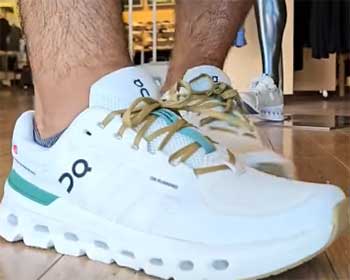
From there, word-of-mouth took over.
The “serious athlete” endorsement trickled down to dedicated amateur runners, who then influenced the weekend warriors.
A parallel movement was happening in professions that require standing all day.
A nurse who tries an On shoe and finds relief after a 12-hour shift will tell five other nurses.
It becomes the “unofficial shoe” of the hospital ward or the coffee shop.
The true masterstroke, however, was bringing Roger Federer into the fold in 2019. This was not a standard celebrity endorsement deal. Federer, a Swiss icon who embodies precision, elegance, and sustained excellence, didn’t just become a face for the brand—he became an investor and a design partner.
This move was seismic. It gave On a level of global cultural cachet that would have otherwise taken decades to build.
Federer’s involvement signaled that On was more than just a running shoe company. It was now a legitimate lifestyle brand with the backing of one of the most beloved and stylish athletes in history.
He co-created “The Roger” collection, a line of tennis-inspired lifestyle sneakers that fully bridged the gap between performance and fashion. Suddenly, people who had never run a mile in their lives were buying On shoes because they were associated with Roger Federer’s effortless class.
Riding the Athleisure Wave
On’s rise perfectly coincided with the explosion of the athleisure movement. The lines between what we wear to the gym, to work, and to social gatherings have blurred into oblivion. Consumers now demand versatility. We want products that can perform when we need them to but look good in any context.
As I mentioned earlier, On’s design ethos is perfectly suited for this new paradigm. The minimalist aesthetic and sophisticated color palettes make them incredibly versatile.
You can wear a pair of Cloud 5s for a morning run, keep them on for your commute, walk around the office in them (in many modern workplaces), and then wear them out to meet friends for a casual dinner without ever looking out of place.
This is a key differentiator from many of their competitors. A pair of brightly colored, hyper-aggressive running shoes from another brand might be fantastic for a marathon, but they look jarring with a pair of chinos. On cracked the code.
They created a performance shoe that doesn’t scream “performance shoe.” This broadens their potential market exponentially. They aren’t just selling to runners; they’re selling to anyone who values comfort, style, and versatility. In our increasingly casual and hybrid world, that’s just about everyone.
The Psychology of a Premium Price Tag
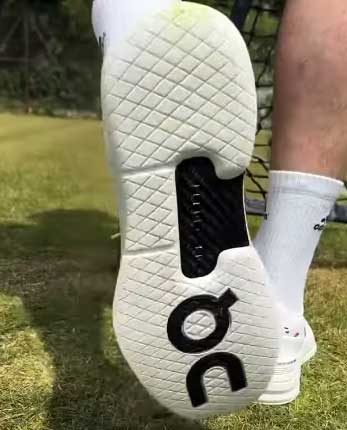
Finally, let’s talk about the price. On shoes are not cheap.
A flagship model will typically set you back more than many of its direct competitors. This, too, is a strategic choice.
A higher price point does a few things. First, it creates a perception of quality and value.
The narrative of “Swiss Engineering” is powerful, and the premium price reinforces it.
We are conditioned to believe that you get what you pay for.
By positioning themselves at the higher end of the market, On implicitly claims their technology, materials, and design are superior.
Second, it creates an element of exclusivity and status.
Owning a pair of On shoes is a subtle signal. It says you are in the know. It says you invest in quality and are part of a particular tribe of discerning consumers.
It’s similar to the way people carry a Yeti tumbler or wear a Patagonia jacket. It’s a functional item that also doubles as a status symbol for a certain lifestyle. The price makes it just inaccessible enough to feel aspirational.
When I combine all these factors, the picture becomes crystal clear. On’s popularity isn’t an accident. It’s a perfect storm. It’s a visually unique product with a genuinely different-feeling technology inside.
It’s a brand that built an unshakable foundation of authenticity with elite athletes before a marketing masterstroke with a global icon catapulted them into the stratosphere. It’s a shoe that perfectly meets the demands of the modern athleisure lifestyle. And it’s priced in a way that makes it feel like a premium, aspirational purchase.
From my initial curiosity as an observer to my current position as an analyst (and, yes, an occasional wearer), I have to admire the execution. On didn’t just create a popular shoe; they engineered a phenomenon.
Also Read: Comparison of Brooks Levitate And Ghost Running Shoes.
Frequently Asked Questions (FAQ)
People are flocking to On Cloud shoes due to a powerful combination of factors. First, their unique CloudTec® sole provides a distinct feeling of a cushioned landing followed by a firm, responsive push-off, which many find exceptionally comfortable for all-day wear. Second, their minimalist, Swiss-engineered design is incredibly versatile, fitting seamlessly into the “athleisure” trend where shoes need to work for fitness, casual outings, and even modern workplaces. Finally, the brand carries a premium, in-the-know status, boosted by its origins in elite running and a high-profile partnership with icon Roger Federer.
The main appeal of On Cloud shoes is their proprietary CloudTec® technology. Unlike a solid block of foam, the outsole is made of individual pods, or “Clouds.” These pods compress both vertically and horizontally upon impact, which provides multi-directional cushioning for a soft landing. Once fully compressed, they form a solid base, enabling a firm and energetic takeoff. This dual sensation of a soft landing and responsive push-off, combined with the shoes’ lightweight construction and stylish, versatile look, is what users find so great.
On’s popularity grew strategically. They first built credibility by targeting elite athletes, like runners and triathletes. When these professionals started winning races in their shoes, it created a strong, authentic endorsement. This positive word-of-mouth then spread to dedicated amateur runners and professionals who stand all day (like doctors and nurses). The tipping point into mainstream popularity was their partnership with tennis legend Roger Federer, who joined as an investor and collaborator. This move elevated the brand’s cultural status, solidified its “Swiss excellence” image, and introduced it to a massive global lifestyle audience beyond just running.
The answer is nuanced, as no single shoe brand is universally recommended for everyone. However, many podiatrists do recommend On Cloud shoes for specific patients and foot types. They are often suggested for individuals seeking good cushioning to alleviate pressure on joints, thanks to the CloudTec® system. Certain models from On have also earned the American Podiatric Medical Association (APMA) Seal of Acceptance, which certifies that they are beneficial to foot health. A podiatrist might recommend a specific On model if its features—like cushioning, a neutral platform, or a rocker sole—match a patient’s particular needs, but they will always advise based on an individual assessment.
Wrapping Up
On Cloud’s popularity is no accident; it’s an engineered phenomenon. The brand masterfully combined a unique visual identity with a genuinely different-feeling technology.
They leveraged authentic marketing, rode the athleisure wave, and used premium positioning to create not just a shoe, but a status symbol. It’s a case study in getting every element right, resulting in a product that defines the modern intersection of performance and lifestyle, which is why they are so popular.
